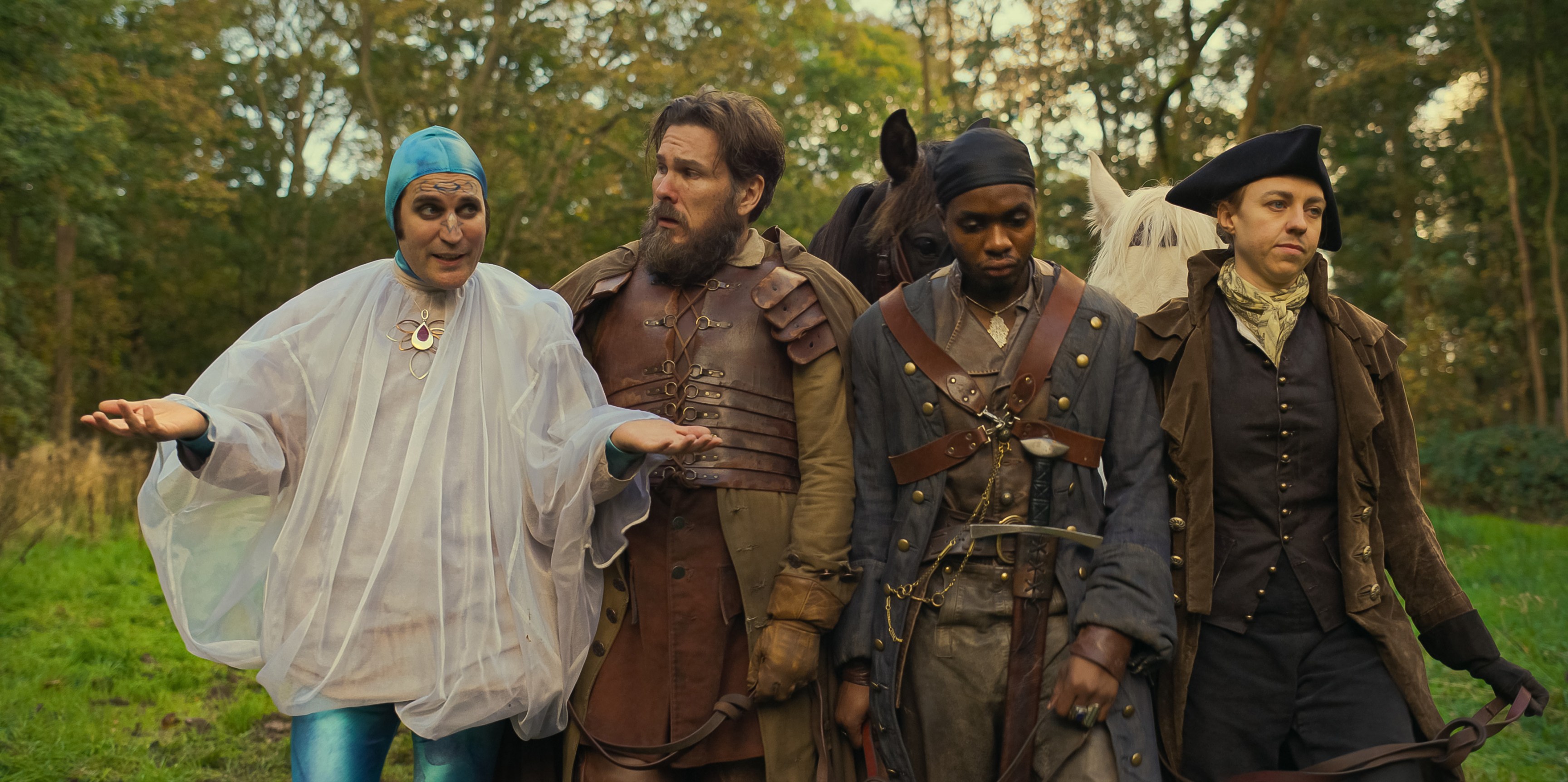Dick Turpin becomes the leader of the Essex gang after causing the death of its head Tom King in Apple TV+’s historical comedy series ‘The Completely Made-Up Adventures of Dick Turpin.’ Together with Nell Brazier, Moose Pleck, and Honesty Barebone, Turpin tries to make the group a prominent one in the region, competing with the likes of The Hellhounds, led by the mighty Leslie Duvall. The Essex gang is based on a real English group of robbers, which was also known as the Gregory gang, named after its leader Samuel Gregory and his brothers Jeremiah and Jasper Gregory. However, Nell, Moose, and Honesty are severely different from the real Turpin’s fellow robbers!
The Inspiration Behind the Essex Gang
The Essex gang was mainly formed by Samuel Gregory, his brothers Jeremiah and Jasper, Joseph Rose, Mary Brazier, John Jones, Thomas Rowden, and John Wheeler. While Nell can be partially based on Mary, Moose and Honesty are more or less entirely fictional. In reality, Tom King, the leader of the group in the period comedy, most likely had no association with the real gang. The leader Samuel was described as “about five feet seven inches high, has a scar about an inch and half long in his light cheek, is fresh colour’d, wears a brown wig, and about 23 years old, is a smith or farrier by trade,” as per The London Gazette.

Dick Turpin became a part of the gang likely in the early 1730s. At the time, the group was involved in livestock theft. To cut the meat and sell it easily, they needed a butcher. Turpin, the son of a butcher, supposedly had enough knowledge about the profession and started lending his services to the gang. When the group turned to raiding houses, Turpin allegedly started becoming a part of the crew. The size of the gang grew at times as it was involved in a robbery with eleven members in 1734. The Essex gang members committed arguably their most brutal robbery in 1735 at the house of a farmer named Joseph Lawrence of Earlsbury Farm in Edgware, England.
Samuel, Turpin, Wheeler, Rose, and John Fielder burst into Lawrence’s house, armed with pistols. “Joseph Lawrence was threatened with death should he not reveal where his money was. The house was ransacked brutally, and Lawrence himself, a man aged more than seventy, was very roughly handled,” wrote James Sharpe in ‘Dick Turpin: The Myth of the English Highwayman.’ “Turpin beat his [Lawrence’s] bare buttocks until they were severely bruised, and the other gang members beat the old man about the head with their pistols. A kettle of water was emptied over his head, and he was sat bare-buttocked on the fire in an effort to make him talk,” the book further reads.
According to Sharpe’s book, “Samuel Gregory found diversion elsewhere. He led the maidservant, Dorothy Street, upstairs, ostensibly to force her to divulge where her master’s money was. In fact, he took her into a garret and raped her at pistol point, threatening to kill her if she did not give in [her hands were still tied].” The robbery was only one among the several thefts the gang committed with or without Turpin. Most of the members of the Essex gang were eventually captured by the authorities, starting with William Saunders, Fielder, and Wheeler. The latter then gave up the rest of the group to the officials.

The arrests of Rose, Mary, and Humphrey Walker followed. Rose, Fielder, Saunders, and Walker were capitally convicted. Walker died on the day of his execution and the rest were hanged and “their bodies were cut down, and taken to Edgware, where they were hung in chains on gibbets until they rotted,” as per Sharpe’s book. Jasper Gregory was executed more or less soon after the deaths of his fellow gang members. Samuel and Jeremy were later captured and the latter died of the wounds he sustained earlier. The leader of the group was sentenced to death and his body was “sent to hang in chains alongside the rotting remains of his three former confederates at Edgware,” reads ‘Dick Turpin: The Myth of the English Highwayman.’
At the time, Mary and Jones remained in prison. Rowden was initially sentenced to death but the judge recommended him for transportation, which led to his departure for Virginia in 1738. Even though Wheeler was released from prison, he died likely of natural causes in 1738. Turpin’s execution happened in 1739 but he was convicted and sentenced to death for stealing three horses, a capital offense at the time. ‘The Completely Made-Up Adventures of Dick Turpin’ is a show that finds humor in the life of Turpin. Since the real history of the Essex gang is filled with condemnable crimes, the writers had to rely on fictional characters such as Moose and Honesty for the narrative of the series.
Read More: Is Jonathan Wilde Based on an Actual Lawman? Did He Capture Dick Turpin in Real Life?


You must be logged in to post a comment.